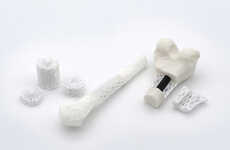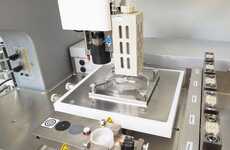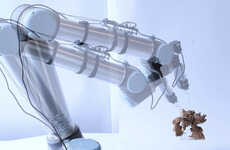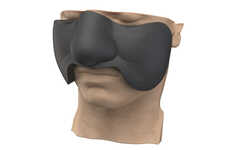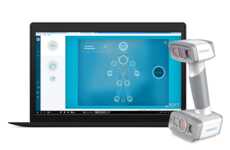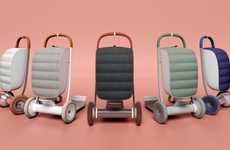
Bone Reconstruction in Landmine Victims is Possible with 3D Printing
Alyson Wyers — January 12, 2017 — Tech
References: findabetterway.org.uk & springwise
This charity uses 3D printing technology for bone reconstruction in landmine victims. Based in the United Kingdom, philanthropic organization Find a Better Way teamed up with the University of Glasgow to grow bone replacements in a lab for reconstructive surgeries. Consisting of both lab-grown bone and 3D printed scaffolding, personalized bone and tissue can be reproduced in only 3 or 4 days.
Coated in stem cells and growth factor, the 3D printed bone scaffolds can be put into a body when it has grown adequately big. The scaffolding will eventually disintegrate and a new piece of bone will grow in its place. This allows surgeons to shape the bone reconstruction specifically to the patient's needs.
Coated in stem cells and growth factor, the 3D printed bone scaffolds can be put into a body when it has grown adequately big. The scaffolding will eventually disintegrate and a new piece of bone will grow in its place. This allows surgeons to shape the bone reconstruction specifically to the patient's needs.
Trend Themes
1. 3D Printing for Bone Reconstruction - Advancements in 3D printing technology allow for the creation of personalized bone replacements, opening up new possibilities in reconstructive surgeries.
2. Lab-grown Bone - The use of lab-grown bone in conjunction with 3D printed scaffolding enables the efficient and rapid production of bone replacements, reducing the waiting time for patients.
3. Stem Cell Coating - Coating the 3D printed bone scaffolds with stem cells and growth factor promotes faster and more precise bone growth, enhancing the effectiveness of the reconstruction process.
Industry Implications
1. Medical Devices - The medical devices industry can explore the development of 3D printed bone replacements as a disruptive innovation that improves patient outcomes and reduces surgical waiting times.
2. Biotechnology - The biotechnology industry can leverage advancements in lab-grown bone and stem cell coating to create innovative solutions for regenerative medicine and tissue engineering applications.
3. Philanthropy - Philanthropic organizations and charities can use 3D printing technology for bone reconstruction as a game-changing approach to assist landmine victims and individuals in need of personalized bone replacements.
3.3
Score
Popularity
Activity
Freshness

